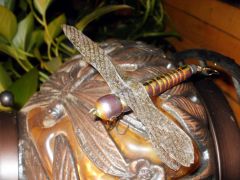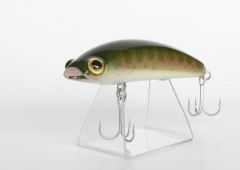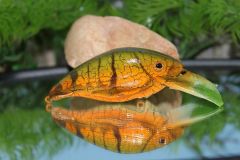-
Posts
14,726 -
Joined
-
Last visited
-
Days Won
364
Content Type
Profiles
Articles
TU Classifieds
Glossary
Website Links
Forums
Gallery
Store
Everything posted by mark poulson
-
Andy "Cooch" Cuccia, a west coast Delta legend and guide, is looking for someone who will work with him and his circle of friends to duplicate some of the super soft worms that they can't get anymore. I suggested he look here, so, if you see a post from him, it's legit.
-
-
-

Rat Swim/wakebait Won't Swim....ggggggrrrr...
mark poulson replied to motomania's topic in Hard Baits
mm, When I am going to try to make a new lure, I always start by finding an old lure that is similar. I take a good look at how it floats or sinks, line tie placement, hook hanger placement, and bill size and angle. I have a bucket of water on my driveway for float testing lures, and that works fine. Lure companies spend a lot on development and testing lures, and I try to take advantage of that, to cut down on my own lure development and testing time. -
You can pick up a rotisserie motor and spit replacement kit cheap at local home improvement centers. I paid $30+- at the most. The one I bought is a 1 rpm motor, that reverses when it encounters resistance, or when it's turned off and back on. The kit came with mounting brackets for the motor, too. I use a ferris wheel dryer, with 14" diameter wheels, and screw eyes in concentric circles on the insides of the wheels opposite each other. The lures mounted closer to the shaft turn at the same 1rpm speed, but move more slowly because they are closer to the center of rotation. I use Etex and Nu Lustre, and have no problems with drips or sags, as long as I don't put too much epoxy on the lures. There's a picture of my turner on page 6 of my gallery pictures. Hit the green square under my avatar, and it will take you to my gallery.
-
I have a ferris wheel type drying wheel, with 14" diameter wheels, and two circular attacment rings, with room for eight lures at a time. I always mount my lures onto the wheel before I coat them. If I am mounting more than four, I load the inner ring first, and coat them one at a time, moving the wheel as needed to get access to all faces. Then I mount the outer ring lures, and coat them the same way. I typically use Etex or Nu Lustre, so I rotate them for at least four hours, and usually all night. I am careful not to wear long sleeve shirts. Epoxy comes off the skin with denatured alcohol much easier than it comes out of clothing, and bare skin does much less damage to a wet lure if it hits it.
-
My doctor says I have the only color lung xrays he's ever seen! Dang...typing that started me coughing!
-
-
Thanks.
-
Does it taste the same, too? Sorry, just couldn't resist.
-
Does the canola oil interfere with whatever you use to seal/harden the POP before you start pouring? I'm asking because I use thinned D2T, several coats, on my first half after I've oven dried it for an hour, without removing the soft plastic masters. Once the epoxy hardens, I spray it with PAM, with the masters still in it, and then fill my second half, and put the first half down on top of the wet POP. Then I turn them both over, tap the top with a rubber handled screw driver for a minute to get any trapped air away from the masters, and let it harden. Then the second half goes into the oven for an hour, and gets coated with the thinned D2T, too. I tried carpenter's glue, thinned, but the spray PAM prevented a good bond, and it peeled sometimes. I haven't had that problem with thinned D2T, but I like the idea of brushing on canola oil, since I think I'd get better coverage, so that's why I'm asking.
-
I ordered one, too. At $6.99 plus $2 shipping, I figured it was worth the gamble. It should arrive any day. By the time it does, I'm hoping you will have tried yours, and posted the results.
-

Rat Swim/wakebait Won't Swim....ggggggrrrr...
mark poulson replied to motomania's topic in Hard Baits
I used to have a "wall of shame" in my garage shop, where I'd hang the lures that I'd built and finish painted before texting, and found out too late that they didn't work. When I first started making lures, getting a nice paint job was the toughest part for me, so it was hard for me to do anything to a lure that I'd painted. Then a little light went on in my head. I took them down, one by one, reworked them with the knowledge I'd accumulated, and got them to work. Then I repainted them and no longer had a bunch of lures staring me in the face, shouting "Failure". All of the lure making and painting skills I've accumulated over the years are directly from here at TU, so keep at it and keep reading here, and you'll do just fine. -
Pete and Dave, I have been using the same Sears compressor for over 40 years in my garage shop. I was taught early on to pour some compressor oil into the tank and slosh it around to coat the inside of the tank and prevent rust. Then I drained the oil out (I saved it to use again) and hooked up the compressor. It's been running ever since, although I don't use it as much as I used to. It has a 30 gallon tank, so it doesn't cycle often when I'm painting. Even if you've already got some black water, which means rust, you can still drain the tank, let it dry, and add enough oil to coat the insides as a rust protector. I've bought a lot of compressors for work over the years, and have done the same thing to all of them. I've never had a tank rust out. I have had motors die and compressors die, but not tanks. Since air nailers and pnuematic tools use oil as a lubricant, and it's typically added through the intake nipple before the hose is attached, any oil that might be included in the air from the tank was never a worry for me, but I use a separater for my air brush lines now that I'm an artist. Hahaha
-
Thanks Pete. If it had not been for John (bassrecord) asking the question, I would never have thought about it in the first place. That's what's great about this site. Even on lure's I've made that are unique, they are all inspired or assisted by something I've seen, either in a store-bought bait, or here on TU. It is safe to say that, without this site, I would never have gotten hooked on lure making. I'm pretty sure that it's been a good thing.....
-
Bondo body putty will set up harder than the balsa, and isn't too heavy. Look for it at your local lumber yard.
-
I agree with Benton. Those look like shrinkage cracks. It looks like your paint coats were too thick, and shrank afterward. Because the cracks are so deep, I also agree that it probably starts with the primer, but, since the cracks are all the way up to the surface, I would suggest you strip it again right down to the sealer, and begin the painting process all over again. I spray two coats of primer, kind of thick, and then, once they've flashed off, but are still soft, I use the hair dryer to speed up the solvent offgassing and drying. The primer I use, Rustoleum, says I can wet sand after an hour, or once it's dry to the touch. So I do that, to get it smooth, hit it with the hair dryer again, and then I let the bait hang overnight. Once it's hung overnight, I hit it with the hair dryer again, to be sure it's completely set, and to warm it up to accept the Createx, and then I start layering on my paint in thin coats, heat set well after each coat.
-

Rat Swim/wakebait Won't Swim....ggggggrrrr...
mark poulson replied to motomania's topic in Hard Baits
Always seal them completely before you test them if you're using wood. Wood will suck up water immediately, and it will change the buoyancy and action, plus you'll have to dry it out again completely before you do seal it. If you don't, any residual water will expand when it gets warm, and cause the paint and topcoat to bubble and delaminate. Been there, done that. -

Rat Swim/wakebait Won't Swim....ggggggrrrr...
mark poulson replied to motomania's topic in Hard Baits
On wake baits, my rule of thumb for bills is match the width of the bait with the bill, and have it project down between 1/2 and 2/3 the width, so a 3/4" wide bill would stick down between 3/8" and1/2" below the bait. I use plano dividers for my prototype bills, set in place with crazy glue, so I can trim them down or reshape them as I test them, if I think it will help. I start big, because it's hard to make a bill bigger by trimming. They are easily removed if I want to change a bill, too, so I also bring along other bills, in different sizes and shapes, and tack them in for testing with crazy glue. -
Sounds good to me!
-
Matt, I think, at this point, the only logical thing is for you to contact them, inform them that you are family, and ask for your share of the loot! Seriously, I don't see a need to change your screen name. You are you, and that should be good enough for everyone.
-
Jim, Pleas post a review.
-
Or maybe use nesting cups or glasses as a mold, pour some rtv silicone into the first, and then force the second cup down into the first until the rtv is forced up at the sides. I've never done anything like this, so I'm only guessing. And I have no idea if you'd need a release agent to make it work. Just a thought.
-
dsaavedra, I don't think I can come any closer. Bassrecord wanted a bait that would roll from it's belly to it's back. What mine does is a 90 degree belly to side and back action when twitched, and a full 360 degree revolution if you pull it hard and fast enough. Getting a bait that will turn 180 degrees, and then roll back down in the opposite direction, is really tricky. I suspect you'd need a computer-controlled rod to impart just the right amount of action to get it to do that, without continuing on over into a full 360 roll. But I'm hoping my solution isn't the only one we come up with.
-
Net Man, Typically, wood bait paint jobs crack because of water getting in and expanding the wood, which then swells and cracks the paint and topcoat. Jointed wood baits are the hardest baits for me to waterproof. That's why I stopped using wood for them. Depending on what wood the TT is made from, if I were going to repaint it I'd tear it down into individual sections and start from scratch. I would take the hinge pins out, so I could get to all the spaces on each individual section, and take the sections down to bare wood, Next I would soak them in wood hardener, or some other penetrating sealer, for at least an hour, and then let them sit and dry for at least a day. I would hit each section with my hair dryer, just like I would if I were drying a coat of Createx, and see if the lure bubbled at the end grain from trapped solvent/sealer. If it bubbled, I'd let it hang another day and try again, and repeat until no more bubbling occured. Then I'd coat the lure parts with 2 coats of thinned D2T, sand them, prime them, and then reassemble the lure and paint it as a whole, so the paint scheme was fluid from one section to another. After the painting was complete, I'd disassemble it again, and coat the inside faces of the joints with straight D2T, lapping it out onto the faces 1/4"+- for a good overlap with the face topcoat. At that point, I'd reassemble the bait, put it on my drying wheel, and coat it with either Etex or Nu Lustre. I would put on three coats total, a day apart. Then I'd let it cure for a few days before I fished it. But, to be honest with you, I've never been completely successful in protecting a jointed wood bait. Something always fails eventually, and water gets in to the wood, expanding it and causing the paint and topcoat to bubble and fail. That's why I went to PVC as a construction material. Hopefully, there are builders here who have had more success than I with wood baits, and who can help you more. Good luck.






